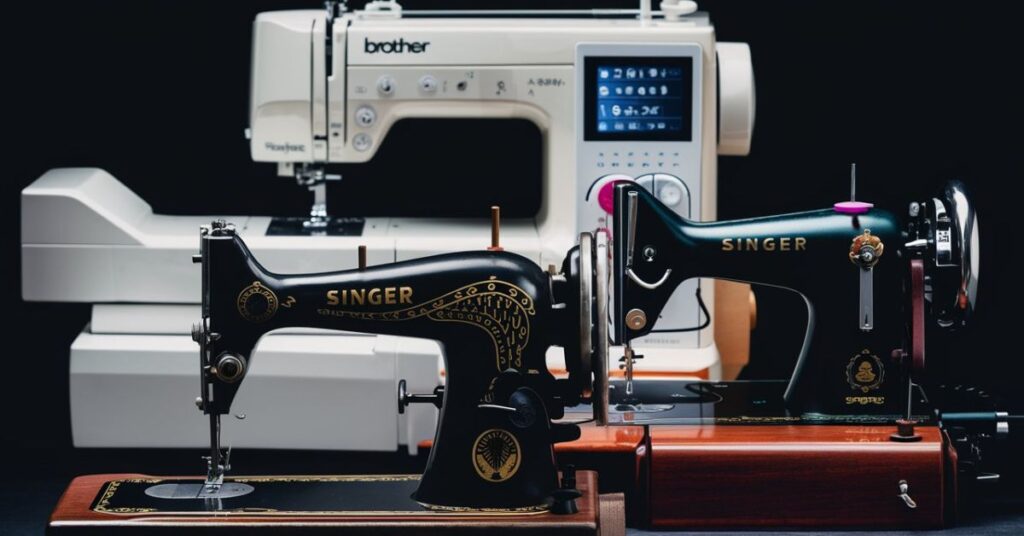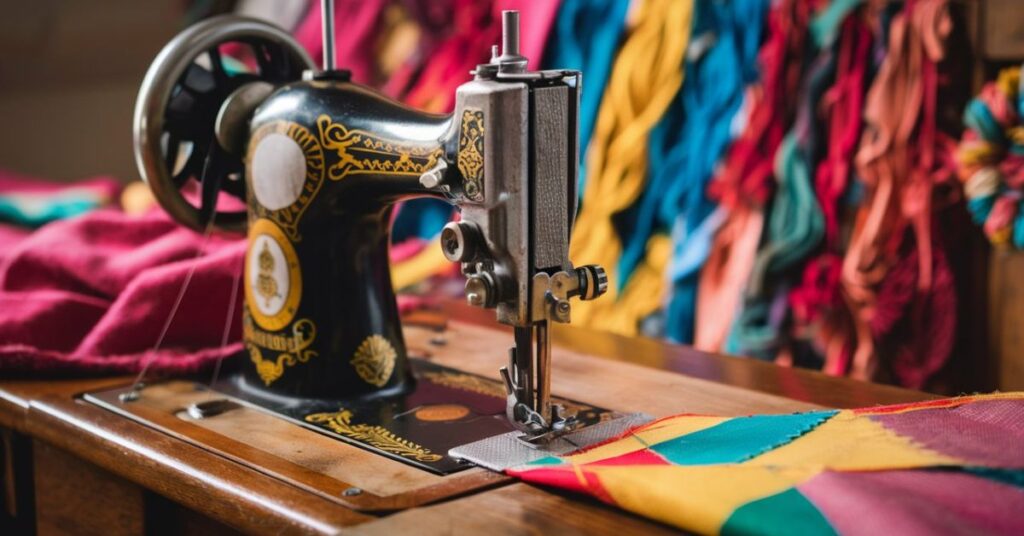Introduction to Sewing Machine
The sewing machine is an invention that has significantly transformed the textile industry and domestic sewing. Since its introduction in the 19th century, it has evolved from a simple device designed to reduce the time and effort needed to sew by hand into a sophisticated tool that supports intricate designs and complex patterns. This article explores the history, evolution, types, and impact of sewing machines, highlighting their continued relevance in modern times.
The History and Evolution of the Sewing Machine
Early Beginnings:
While the idea of a sewing machine dates back to the 18th century, practical machines only started to emerge in the 19th century. The first functional sewing machine was invented by French tailor Barthelemy Thimonnier in 1830. Originally made for industrial applications, his device employed a single strand and a barbed needle to produce a chain stitch.
Significant Milestones:
One of the most significant developments in the history of sewing machines was the invention of the lockstitch mechanism by Elias Howe in 1846. This design, which used two threads to create a stronger, more reliable stitch, became the foundation for future sewing machines. Isaac Singer improved Howe’s invention by adding a foot pedal, or treadle, which made the machine more efficient and easier to use.
Mass Production and Popularity:
By the late 19th century, sewing machines had become more accessible to the general public. Companies like Singer, Pfaff, and Bernina began mass-producing sewing machines, making them affordable and available to households around the world. These machines revolutionized domestic sewing, allowing people to create clothing and household items with greater ease and precision.
Types of Sewing Machine

Sewing machines come in various types, each designed for specific purposes and levels of expertise. Understanding the different types can help users choose the right machine for their needs.
Mechanical Sewing Machines:
Mechanical sewing machines are the most basic type, operated by a foot pedal and manual controls. They are durable, easy to maintain, and ideal for beginners or those who prefer a straightforward, hands-on approach. These machines are perfect for simple sewing tasks, such as hemming, stitching seams, and basic alterations.
Electronic Sewing Machine:
Electronic sewing machines offer more features and functionalities than mechanical ones. These machines are electrically powered and feature various stitch patterns, automatic needle threading, and adjustable speed control. These machines are suitable for intermediate sewers who need more versatility and ease of use.
Computerized Sewing Machines:
Computerized sewing machines are advanced tools that utilize computer technology to provide a wide range of functions. They come with programmable stitch patterns, automatic buttonholes, and embroidery capabilities. These machines are ideal for experienced sewers and professionals who require precision and customization in their work.
Overlock and Sewing Machines:
Overlock and serger machines are specialized tools created to finish edges and seams. By trimming the fabric as they sew, these machines create a neat, professional finish. They are crucial for garment construction and widely utilized in the fashion industry.
The Impact of Sewing Machines on Society
The introduction and widespread use of sewing machines have had a profound impact on various aspects of society, from the textile industry to domestic life.
Industrial Revolution:
Sewing machines played a crucial role in the Industrial Revolution, revolutionizing the textile industry. They significantly increased productivity, allowing factories to produce clothing and textiles on a large scale. This shift not only boosted the economy but also made clothing more affordable and accessible to a broader population.
Women’s Empowerment:
The availability of sewing machines empowered women by providing them with new opportunities for employment and economic independence. Many women began working as seamstresses or starting their own businesses, contributing to their families’ incomes and gaining financial autonomy. Additionally, sewing became a valuable skill that women could use to clothe their families and create household items.
Fashion and Creativity:
Sewing machines have had a lasting impact on fashion and creativity. They have enabled designers and hobbyists to experiment with different fabrics, patterns, and techniques, leading to the development of new styles and trends. Sewing machines have also made it easier for people to express their creativity and individuality through custom-made clothing and accessories.
Environmental Considerations:
In recent years, sewing machines have become a tool for promoting sustainability and reducing waste. The rise of the slow fashion movement and the growing awareness of the environmental impact of fast fashion have encouraged more people to sew their own clothes, repair and upcycle existing garments, and create sustainable fashion items. Sewing machines have thus become an essential part of the movement towards more responsible and eco-friendly consumption.
Modern Innovations and Future Trends
As technology continues to advance, sewing machines are evolving to meet the needs of modern users. Some of the latest innovations and future trends in sewing machines include:
Smart Sewing Machine:
Smart sewing machines feature Wi-Fi connectivity, touchscreens, and software integration. These advanced machines can connect to computers or mobile devices, enabling users to download patterns, access tutorials, and effortlessly customize their projects. Smart sewing machines are paving the way for a more connected and interactive sewing experience.
3D Sewing and Embroidery:
3D sewing and embroidery machines are capable of creating three-dimensional designs and patterns. These machines use advanced technology to manipulate fabrics and threads, producing intricate and textured designs. This innovation is opening up new possibilities for fashion, home décor, and art.
Sustainability and Eco-Friendly Features:
As sustainability becomes a priority for many consumers, sewing machine manufacturers are incorporating eco-friendly features into their products. This includes using recycled materials, energy-efficient motors, and environmentally friendly packaging. These efforts are helping to reduce the environmental impact of sewing machines and promote more sustainable practices.
Customization and Personalization:
The demand for personalized and customized products is driving the development of sewing machines that offer greater flexibility and creativity. Machines with extensive stitch libraries, embroidery capabilities, and programmable features allow users to create unique and tailored items. This pattern is anticipated to persist as an increasing number of individuals aim to showcase their uniqueness through their works.
Conclusion to Sewing Machine
The sewing machine is a remarkable invention that has stood the test of time. From its humble beginnings in the 19th century to its modern-day iterations, it has revolutionized the way we create and repair textiles. Sewing machines have empowered individuals, transformed industries, and fostered creativity and innovation. As technology continues to advance, the future of sewing machines looks promising, with new features and capabilities that will further enhance their utility and appeal. Whether you are a beginner, a seasoned sewer, or a professional, the sewing machine remains an indispensable tool that continues to inspire and facilitate creativity.

